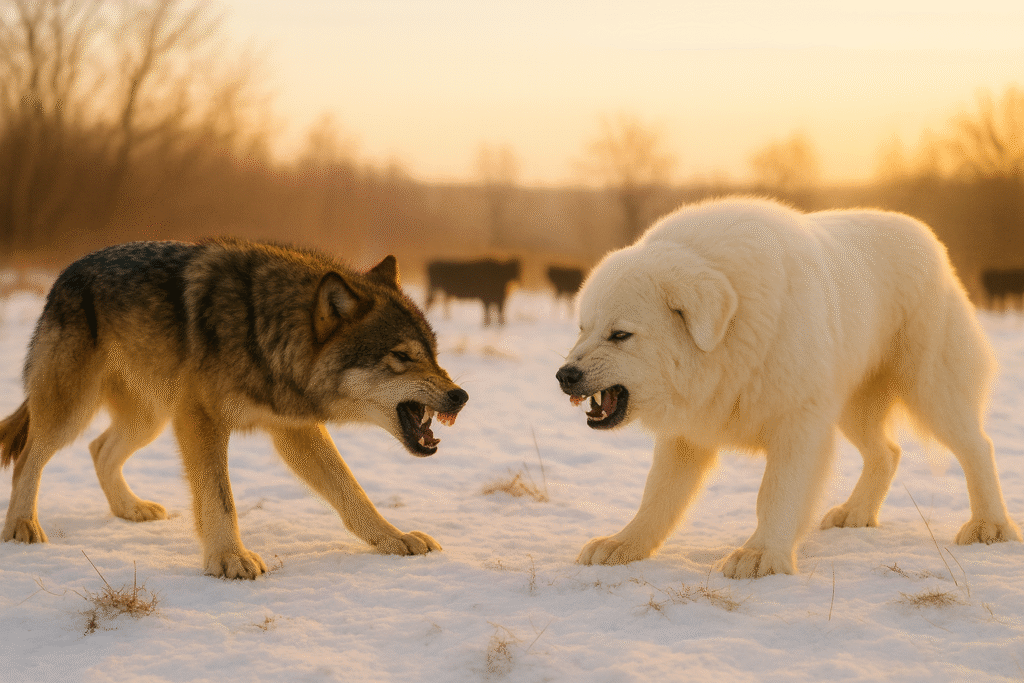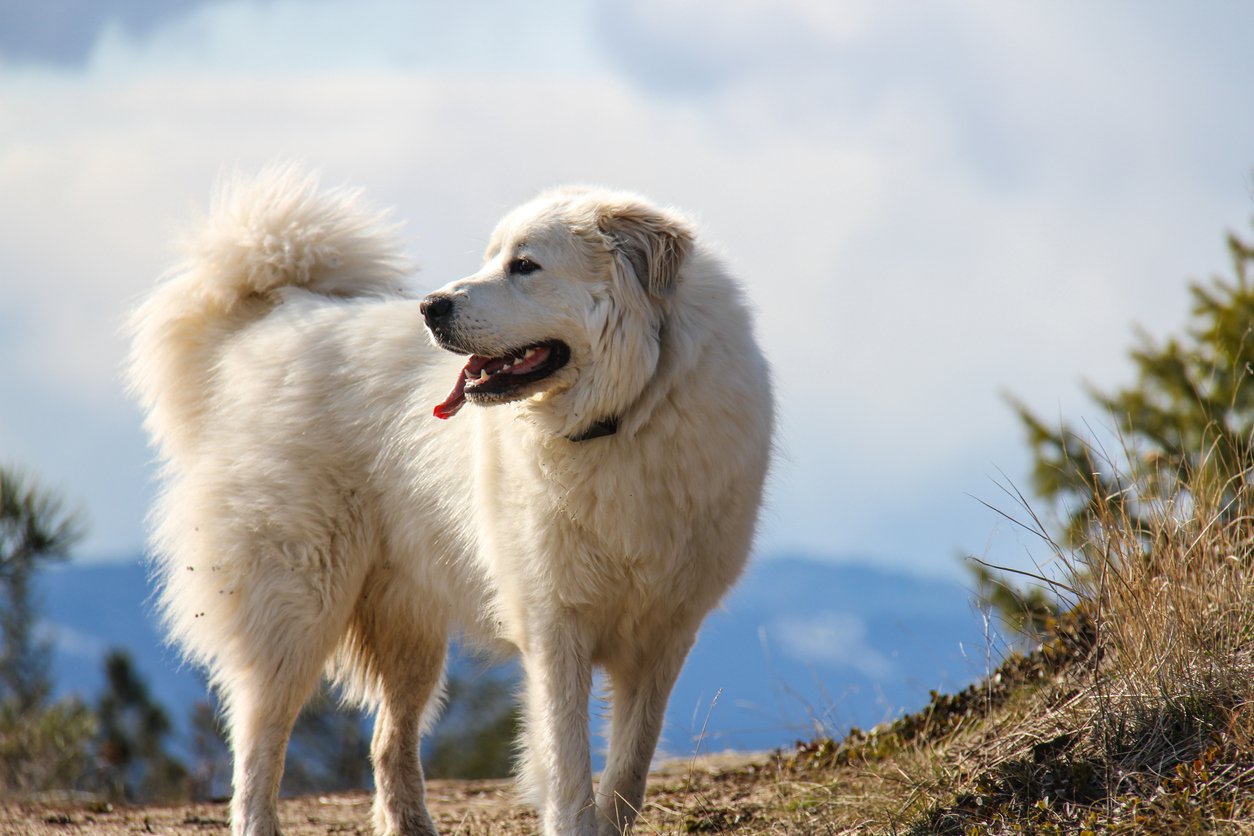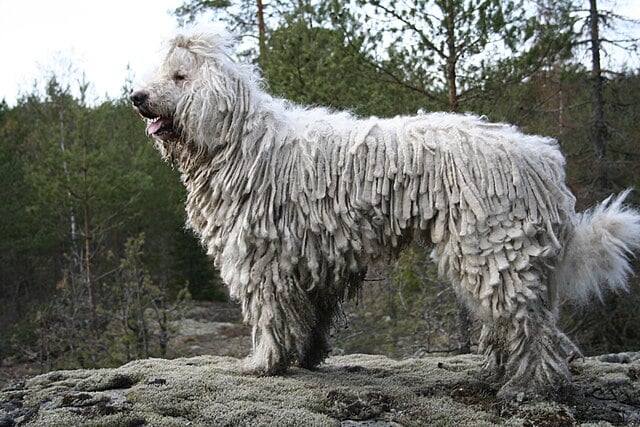Ancient guardians shaped by harsh survival demands.

Throughout history, some dogs were bred not for companionship or sport but for the punishing work of guarding livestock against wolves and other predators. Harsh terrain, long nights and constant danger shaped animals known for stamina, judgment and steady courage rather than showy aggression. Even as modern conservation focuses on coexistence, these guardian breeds still carry the imprint of their past roles, revealing how people and animals adapted together in unforgiving landscapes. Their legacy reminds us that protecting herds once demanded resilience, restraint and an instinctive understanding of the wild.
1. The Kangal Dog earned its reputation through necessity.

This large guardian originated in the rugged livestock regions of Turkey where wolves roamed openly. The dog’s speed and imposing size helped it hold ground long enough to deter predators without escalating conflict. Shepherds valued its calm assessment of threats and its willingness to place itself between the flock and danger. The breed’s protective instinct developed over generations of real world testing.
As farming patterns changed, the Kangal remained one of the most reliable guardians in its homeland. Its balanced nature, combined with a powerful posture, allowed communities to protect livestock while reducing losses to wildlife. The breed’s legacy shaped many approaches that other regions adopted in similar environments.
2. Central Asian Shepherds developed strength through harsh climates.

These dogs evolved across regions where wolves, cold winds and steep terrain created constant pressure. Their thick coats and muscular bodies allowed them to stay outside through long nights while watching for movement along distant ridges. Their independence came from a need to make fast decisions without waiting for human guidance.
Over time the breed developed an uncanny ability to judge risk. They conserved energy during calm moments, then reacted decisively when herds were threatened. This reliable instinct helped families rely on them in remote areas where human protection was limited.
3. Anatolian Shepherds grew into steady forces of protection.

This breed adapted to the unpredictable rhythms of pastoral life where predators and livestock followed seasonal migrations. Their endurance allowed them to patrol wide stretches of land without losing focus. Their presence alone often discouraged predators from approaching, reducing the need for tense encounters.
As these dogs matured, their protective instincts blended with patience and awareness. Their ability to remain composed during stressful moments made them valuable partners. That same temperament guides their modern work in conservation projects designed to reduce conflict between predators and herds.
4. Tibetan Mastiffs formed their skills high in remote mountains.

Harsh terrain and ancient trade routes placed these dogs in constant contact with predators. Their size, dense coat and imposing stance were products of an environment where isolation demanded self reliance. They learned to guard villages, livestock and property with minimal human instruction.
Over generations the breed developed deep loyalty to its territory. Their controlled aggression and calm watchfulness came from living among roaming carnivores that tested boundaries frequently. These traits made them one of the earliest examples of dedicated guardian breeds.
5. Caucasian Shepherds relied on sheer presence to deter threats.

The mountains of the Caucasus fostered a breed known for powerful frame and unwavering confidence. These dogs patrolled ridgelines and valleys where wolves moved in coordinated groups. Their heavy coats protected them from frigid winds as they remained stationed near livestock through the night.
As their reputation grew, their defensive instincts became even more refined. They learned to stand their ground without excessive force, relying on posture and deep vocalizations to turn predators away. Their work demonstrated how presence and judgment can reduce conflict in wild territories.
6. Great Pyrenees maintained vigil over large herds.

Their calm faces often hide a long history of guarding flocks across mountain passes and open fields. These dogs formed strong bonds with sheep and goats, living among them full time. Their size and confident stance signaled to predators that the herd was not undefended, often preventing encounters before they escalated.
As modern agriculture shifted, their guardian instincts transitioned to farms in multiple countries. Their patience makes them adaptable protectors for livestock, maintaining traditions that stretch back centuries. The breed’s steady nature guided its role as a peaceful barrier between herds and predators.
7. Komondors protected herds with strategic awareness.

These Hungarian dogs developed a unique coat that blended with flocks, allowing them to stay close without alarming livestock. Their observational skills helped them track subtle shifts in behavior that signaled a nearby threat. Their method relied less on confrontation and more on positioning and presence.
As time passed, Komondors demonstrated the power of subtle guarding tactics. Their independence and judgment allowed them to protect animals across broad pastures where human presence was minimal. These quiet guardians showed how intelligence shapes effective livestock defense.
8. Kuvaszok carried an unusual mix of speed and instinct.

Once trusted in royal courts, these dogs eventually became livestock protectors on rural farms. Their long legs and alert movements allowed them to respond quickly to predators crossing property lines. Their loyalty made them dependable guardians even during unpredictable weather and long nights.
Over generations the Kuvasz adapted to environments requiring endurance and sharp decision making. Their quick reactions helped them manage threats before livestock panicked. These qualities created a foundation for their lasting guardian reputation.
9. Spanish Mastiffs developed calm authority along ancient transhumance routes.

Shepherds moving thousands of animals across seasonal grazing lands relied heavily on these dogs. Wolves followed the herds, testing the edges of the flock for weakness. Spanish Mastiffs learned to walk the perimeter with deliberate confidence, providing a stable wall of protection.
As their role continued, the breed’s patience and intelligence became defining traits. They rarely rushed into conflict, instead using their presence to keep predators at a distance. Their ability to maintain order across shifting landscapes made them essential partners.
10. Akbash Dogs found balance through selective rural breeding.

These Turkish guardians combined speed, independence and attentiveness. Their pale coat helped them remain visible to shepherds while blending softly with livestock. Their instincts pushed them to stay near the flock, responding quickly whenever movement on the horizon suggested danger.
As flocks expanded into new grazing zones, Akbash Dogs adapted easily. Their balanced temperament and endurance allowed them to guard large areas without losing focus. They represent how rural communities refined guardian traits through centuries of practical experience.
